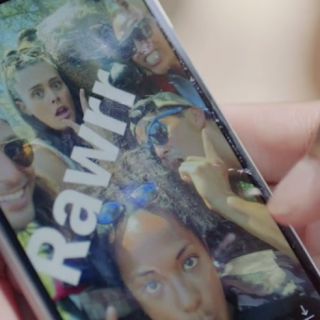When it comes to digital, 5 years might as well be a lifetime. From shopping habits to job opportunities, the landscape has shifted dramatically in this time period. In 2011, as marketers we were manically discussing the resurgence of Display advertising thanks to Google’s fresh-faced remarketing features, pushing the notion of online channel integration, and reacting to the media in the face of online privacy threats.
It was also the year that Google’s Panda update caused real waves, followed by a series of 8 iterations to the update which sent SEOers everywhere into mild meltdown. It was the year that Google also launched the now seemingly forgotten +1 button, and expanded their Knowledge Graph functionality to non-English queries. 2011 was big for the digital industry.
As far as products were concerned, we were showcased the likes of Kinect for the Xbox 360, Samsung brought out their much awaited 4G Galaxy tab, and HP launched their Touchpad. The hunger for digital development and device expansion was prevalent, reacting to UX demands and a need for a new approach with regards to online consumption.
It was Social Media however where the most memorable changes occurred. The concept of things going viral really entered our vocabulary when the news of Osama Bin Laden’s death broke on Twitter, breaking records with 12.4 million tweets per hour. Video platforms like Vimeo began to really take off, and social media management dashboards like Hootsuite and Tweetdeck really found their niche as businesses began to capitalise on using social platforms for audience engagement.
Social Media continues to evolve at a rate incomparable to traditional media, offering an increased number of touchpoints available to businesses looking to connect and engage with their consumers. Instagram, Facebook, Twitter and even Snapchat have developed into platforms that can be accessed and utilised by businesses, meaning there are more opportunities than ever before to be there with your message at the right place, and the right time.
This broad range yet granular-targeted communication mix removes traditional barriers from the customer journey, and gives us, as an agency a better scope of products that impart the importance of audience targeting to our clients, and in turn allows our clients to connect with their consumers in a more personal, intimate fashion.
It’s hardly surprising that Social Media is also a contributor to the increased amount of time people spend online, and when coupled with advancements in WiFi capabilities and improved 4G signals, consumers are now more accessible than ever before, and have greater control over the mediums that influence their buying behaviour both online and offline.
It would be fair to say that although the rate that businesses have being moving towards digital has slowed in recent years, it’s still increasing, and those who have been assisted by coherent and performance driven strategies have benefited greatly from the shifts in consumer behaviour.
Device driven targeting and a clear lean towards mobile as the technology of choice has also had a huge impact on the way businesses reach their consumer, both from a technical and aesthetic perspective. The improvement of payment gateways and security on mobile and tablet devices has influenced a degree of trust from the user – one of the primary elements that held back device-based ecommerce in the past. The geo-targeting campaigns that we offer to our clients across multiple platforms mean that a business stays with their consumer throughout their purchasing journey, offering targeting and geo-specific messaging on a completely different level than has been available previously. Even traditional media channels are moving towards this strategy to give greater and more targeted access to their consumers, with Sky AdSmart leading the way with a direct link between both offline and online media.
Whilst the highlights of the current digital landscape offer us some insight into what our future market looks like, our industry is driven by further technological advancements and consumer perception over how much possession they see a business having over their online communication. We’re reaching a delicate balance of sorts, where although we can truly infiltrate a consumer on every level imaginable, at what point will this cause these users to push back, and lessen their want to be influenced by such media?
Cross device tracking will allow us to improve the quality and relevancy of our communications with consumers, which could help waver that concern, and ensure that consumers are offered almost a show of respect through quality targeted advertising from businesses.
The internet is flooded with predictions on where the digital landscape is headed, and it’s reassuring to know that innovation and forward-thinking is a core pillar of Displaying Ads’s operational focus. Rising consumer expectations are a given, and we have to accept that media advertising alone is no longer the main manifestation of our client’s desire – instead we must focus our efforts on the increased emphasis of behavioural and audience led data and promote personalised interactions to engage the end consumer.



